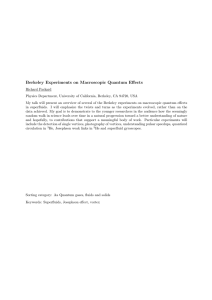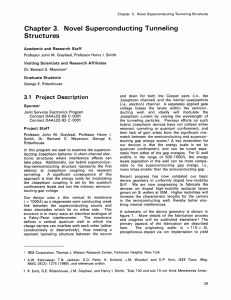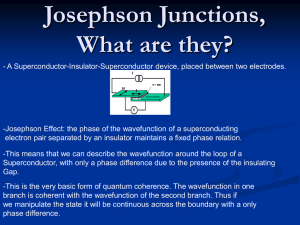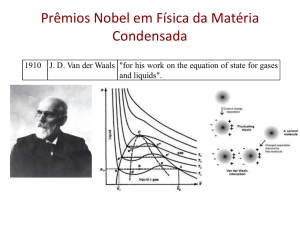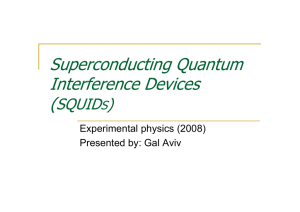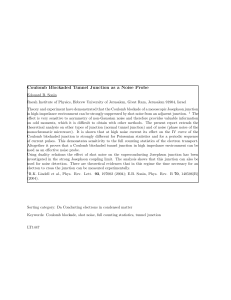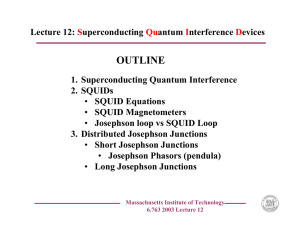THE FLUXION IN A CURVED JOSEPHSON JUNCTION TOMASZ DOBROWOLSKI
advertisement
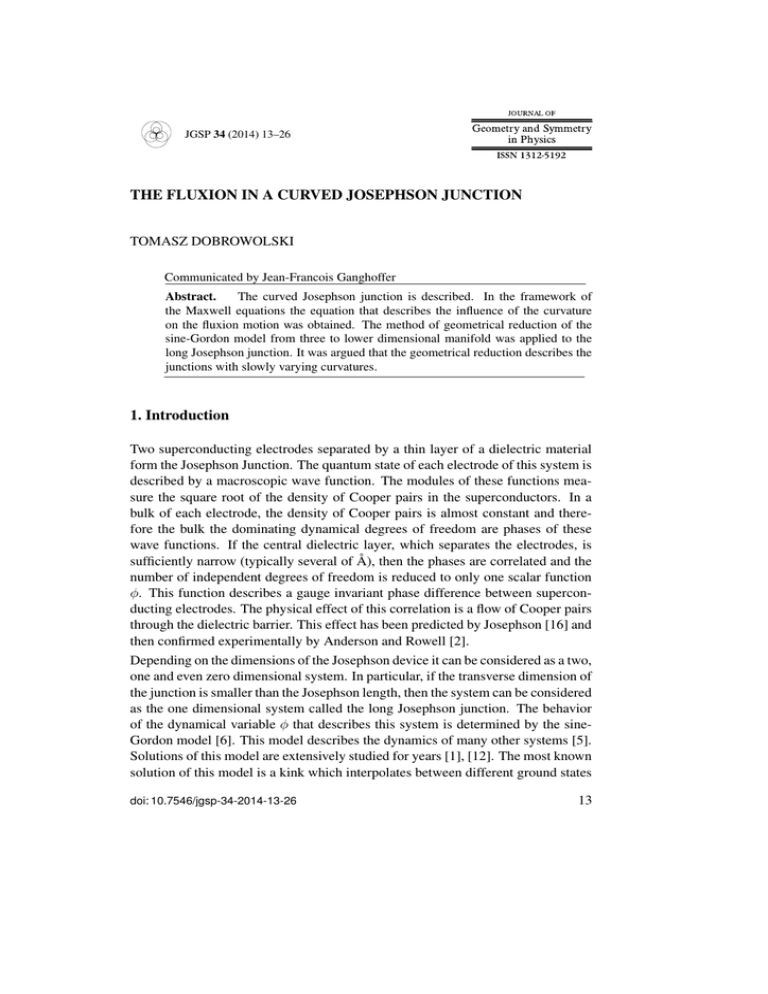
JGSP 34 (2014) 13–26 THE FLUXION IN A CURVED JOSEPHSON JUNCTION TOMASZ DOBROWOLSKI Communicated by Jean-Francois Ganghoffer Abstract. The curved Josephson junction is described. In the framework of the Maxwell equations the equation that describes the influence of the curvature on the fluxion motion was obtained. The method of geometrical reduction of the sine-Gordon model from three to lower dimensional manifold was applied to the long Josephson junction. It was argued that the geometrical reduction describes the junctions with slowly varying curvatures. 1. Introduction Two superconducting electrodes separated by a thin layer of a dielectric material form the Josephson Junction. The quantum state of each electrode of this system is described by a macroscopic wave function. The modules of these functions measure the square root of the density of Cooper pairs in the superconductors. In a bulk of each electrode, the density of Cooper pairs is almost constant and therefore the bulk the dominating dynamical degrees of freedom are phases of these wave functions. If the central dielectric layer, which separates the electrodes, is sufficiently narrow (typically several of Å), then the phases are correlated and the number of independent degrees of freedom is reduced to only one scalar function φ. This function describes a gauge invariant phase difference between superconducting electrodes. The physical effect of this correlation is a flow of Cooper pairs through the dielectric barrier. This effect has been predicted by Josephson [16] and then confirmed experimentally by Anderson and Rowell [2]. Depending on the dimensions of the Josephson device it can be considered as a two, one and even zero dimensional system. In particular, if the transverse dimension of the junction is smaller than the Josephson length, then the system can be considered as the one dimensional system called the long Josephson junction. The behavior of the dynamical variable φ that describes this system is determined by the sineGordon model [6]. This model describes the dynamics of many other systems [5]. Solutions of this model are extensively studied for years [1], [12]. The most known solution of this model is a kink which interpolates between different ground states doi: 10.7546/jgsp-34-2014-13-26 13




